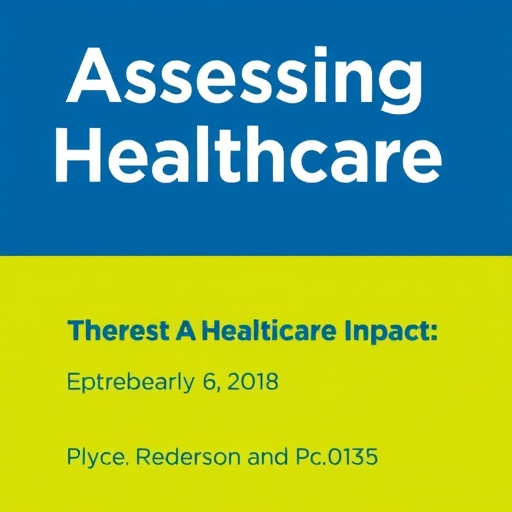The 2015-2016 El Niño event brought weather conditions that triggered regional disease outbreaks throughout the world, according to a new NASA study that is the first to comprehensively assess the…
view more
The 2015-2016 El Niño event brought weather conditions that triggered regional disease outbreaks throughout the world, according to a new NASA study that is the first to comprehensively assess the public health impacts of the major climate event on a global scale.
El Niño is an irregularly recurring climate pattern characterized by warmer than usual ocean temperatures in the equatorial Pacific, which creates a ripple effect of anticipated weather changes in far-spread regions of Earth. During the 2015-2016 event, changes in precipitation, land surface temperatures and vegetation created and facilitated conditions for transmission of diseases, resulting in an uptick in reported cases for plague and hantavirus in Colorado and New Mexico, cholera in Tanzania, and dengue fever in Brazil and Southeast Asia, among others.
“The strength of this El Niño was among the top three of the last 50 years, and so the impact on weather and therefore diseases in these regions was especially pronounced,” said lead author Assaf Anyamba, a research scientist at NASA’s Goddard Space Flight Center in Greenbelt, Maryland. “By analyzing satellite data and modeling to track those climate anomalies, along with public health records, we were able to quantify that relationship.”
The study utilized a number of climate datasets, among them land surface temperature and vegetation data from the Moderate Resolution Imaging Spectroradiometer aboard NASA’s Terra satellite, and NASA and National Oceanic and Atmospheric Administration precipitation datasets. The study was published Feb. 13 in the journal Nature Scientific Reports.
Based on monthly outbreak data from 2002 to 2016 in Colorado and New Mexico, reported cases of plague were at their highest in 2015, while the number of hantavirus cases reached their peak in 2016. The cause of the uptick in both potentially fatal diseases was an El Niño-driven increase in rainfall and milder temperatures over the American Southwest, which spurred vegetative growth, providing more food for rodents that carry hantavirus. A resulting rodent population explosion put them in more frequent contact with humans, who contract the potentially fatal disease mostly through fecal or urine contamination. As their rodent hosts proliferated, so did plague-carrying fleas.
A continent away, in East Africa’s Tanzania, the number of reported cases for cholera in 2015 and 2016 were the second and third highest, respectively, over an 18-year period from 2000 to 2017. Cholera is a potentially deadly bacterial infection of the small intestine that spreads through fecal contamination of food and water. Increased rainfall in East Africa during the El Niño allowed for sewage to contaminate local water sources, such as untreated drinking water. “Cholera doesn’t flush out of the system quickly,” Anyamba said, “so even though it was amplified in 2015-2016, it actually continued into 2017 and 2018. We’re talking about a long-tailed, lasting peak.”
In Brazil and Southeast Asia, during the El Niño dengue fever proliferated. In Brazil the number of reported cases for the potentially deadly mosquito-borne disease in 2015 was the highest from 2000 to 2017. In Southeast Asia, namely Indonesia and Thailand, the number of reported cases, while relatively low for an El Niño year, was still higher than in neutral years. In both regions, the El Niño produced higher than normal land surface temperatures and therefore drier habitats, which drew mosquitoes into populated, urban areas containing the open water needed for laying eggs. As the air warmed, mosquitoes also grew hungrier and reached sexual maturity more quickly, resulting in an increase in mosquito bites.
The strong relationship between El Niño events and disease outbreaks underscores the importance of existing seasonal forecasts, said Anyamba, who has been involved with such work for the past 20 years through funding from the U.S. Department of Defense. Countries where these outbreaks occur, along with the United Nations’ World Health Organization and Food and Agriculture Organization, can utilize these early warning forecasts to take preventive measures to minimize the spread of disease. Based on the forecast, the U.S. Department of Defense does pre-deployment planning, and the U.S. Department of Agriculture (USDA) takes measures to ensure the safety of imported goods.
“Knowledge of the linkages between El Niño events and these important human and animal diseases generated by this study is critical to disease control and prevention, which will also mitigate globalization,” said co-author Kenneth Linthicum, USDA center director at an entomology laboratory in Gainesville, Florida. He noted these data were used in 2016 to avert a Rift Valley fever outbreak in East Africa. “By vaccinating livestock, they likely prevented thousands of human cases and animal deaths.”
“This is a remarkable tool to help people prepare for impending disease events and take steps to prevent them,” said co-author William Karesh, executive vice president for New York City-based public health and environmental nonprofit EcoHealth Alliance. “Vaccinations for humans and livestock, pest control programs, removing excess stagnant water — those are some actions that countries can take to minimize the impacts. But for many countries, in particular the agriculture sectors in Africa and Asia, these climate-weather forecasts are a new tool for them, so it may take time and dedicated resources for these kinds of practices to become more utilized.”
According to Anyamba, the major benefit of these seasonal forecasts is time. “A lot of diseases, particularly mosquito-borne epidemics, have a lag time of two to three months following these weather changes,” he said. “So seasonal forecasting is actually very good, and the fact that they are updated every month means we can track conditions in different locations and prepare accordingly. It has the power to save lives.”
###
For more information about NASA Earth science, visit:
https:/
Media Contact
Samson Reiny
[email protected]
Original Source
https:/
Related Journal Article
http://dx.




